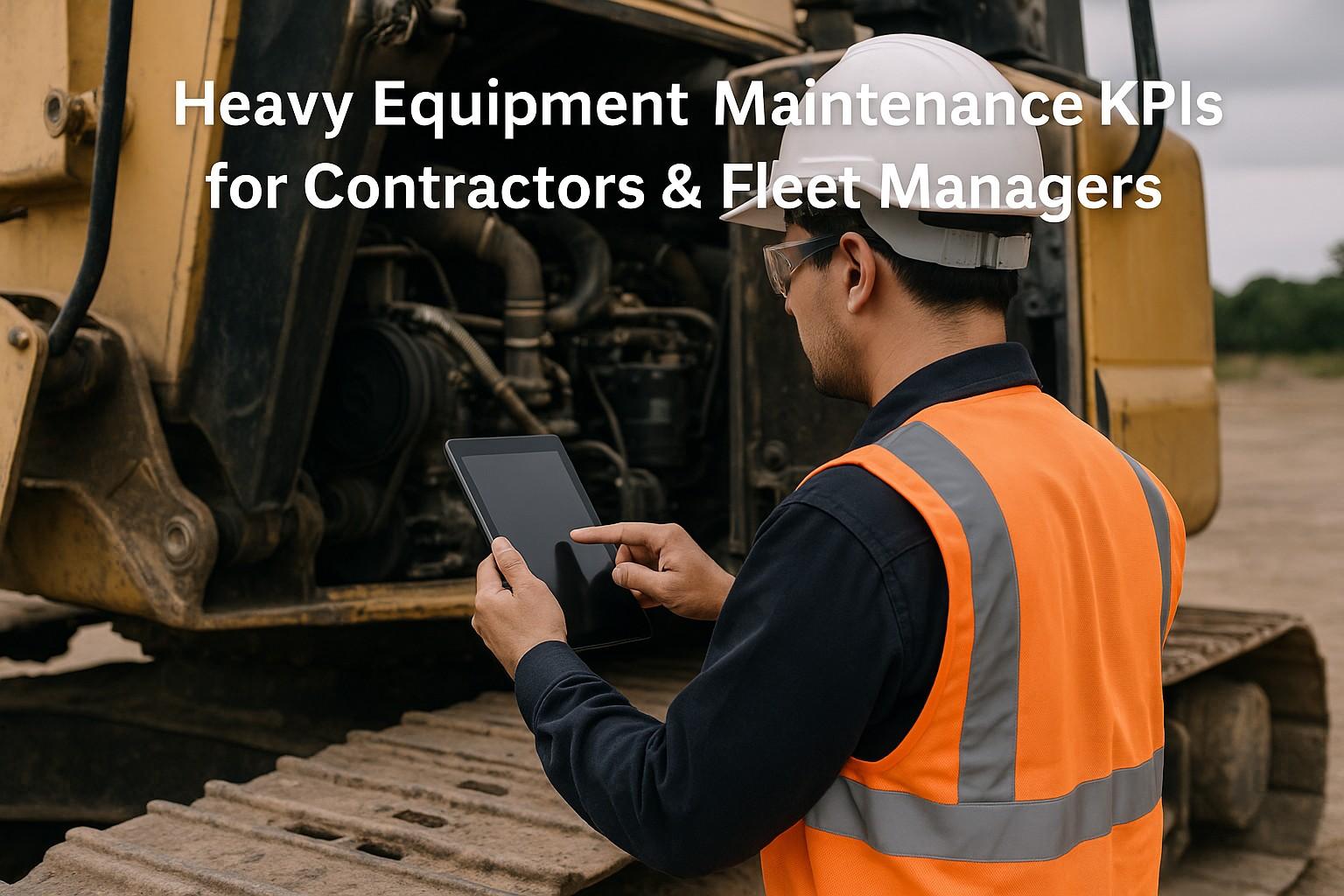Transform your construction operations with IoT-powered fleet management solutions that reduce costs by 25%, prevent equipment theft, and optimize heavy machinery performance through real-time monitoring and predictive maintenance.
Smart Fleet Technology for Construction: IoT Solutions for Heavy Equipment Management
The construction industry is experiencing a digital revolution. With projects becoming more complex and timelines tighter, construction fleet management has evolved from simple vehicle tracking to sophisticated IoT ecosystems that optimize every aspect of heavy equipment operations. If you're managing construction fleets, the question isn't whether to adopt smart technology—it's how quickly you can implement it to stay competitive.
What Is Smart Fleet Technology for Construction?
Smart construction equipment represents the integration of Internet of Things (IoT) sensors, GPS tracking, and advanced analytics into your heavy machinery fleet. Unlike traditional fleet management that relies on manual reporting and reactive maintenance, smart fleet technology provides real-time insights that transform how you operate.
Modern equipment tracking software goes beyond simple location monitoring. It creates a comprehensive digital ecosystem that connects your excavators, bulldozers, cranes, and support vehicles into a unified management platform.
Core Components of Smart Fleet Systems
- IoT Sensors: Monitor engine health, hydraulic pressure, fuel consumption, and operating temperatures
- GPS Tracking: Real-time location data with geofencing capabilities
- Telematics Devices: Collect and transmit equipment performance data
- Analytics Platforms: Process data to generate actionable insights
- Mobile Applications: Field access to equipment status and management tools
Ready to Modernize Your Fleet Management?
Professional equipment inspections are the foundation of any smart fleet strategy. Ensure your heavy equipment is inspection-ready and optimized for IoT integration.
Getting StartedBook a Demo
The Business Case: Why Heavy Equipment Management Needs IoT
Construction companies face unprecedented challenges: skilled labor shortages, rising fuel costs, stricter safety regulations, and project delays that can devastate profitability. Construction equipment telematics addresses these challenges head-on.
Critical Pain Points Smart Technology Solves
1. Unplanned Downtime Elimination
Equipment failures don't just stop work—they create cascading delays across multiple projects. Predictive maintenance construction technology analyzes equipment performance patterns to predict failures before they occur.
IoT sensors continuously monitor:
- Engine vibration patterns indicating bearing wear
- Hydraulic fluid temperatures suggesting system stress
- Fuel consumption anomalies revealing efficiency problems
- Operating hour data for precise maintenance scheduling
2. Asset Utilization Optimization
Many construction companies discover they're operating equipment at only 40-60% capacity. Equipment utilization tracking reveals which machines are underused, overworked, or sitting idle, enabling better resource allocation.
3. Theft Prevention and Recovery
Construction equipment theft costs the industry $300 million to $1 billion annually. Heavy equipment GPS tracking with geofencing alerts provides immediate notification when equipment moves outside designated areas, dramatically improving recovery rates.
Advanced IoT Applications in Construction Fleet Management
Real-Time Equipment Health Monitoring
Construction equipment monitoring systems create digital twins of your physical assets. These virtual representations continuously update with real-time data, allowing you to:
- Monitor engine performance parameters remotely
- Track hydraulic system efficiency
- Analyze operator behavior patterns
- Optimize fuel consumption across the fleet
Intelligent Dispatch and Route Optimization
Smart fleet tracking solutions integrate with project management systems to automatically dispatch the right equipment to the right location at the optimal time. This reduces travel time, minimizes fuel consumption, and ensures equipment availability when needed.
Maximize Your Equipment Investment
Smart technology works best with properly maintained equipment. Professional inspections ensure your fleet operates at peak efficiency and integrates seamlessly with IoT systems.
Getting StartedBook a Demo
Safety and Compliance Enhancement
Construction IoT solutions significantly improve jobsite safety through:
- Operator Behavior Monitoring: Track speed, harsh braking, and equipment misuse
- Proximity Alerts: Prevent collisions between equipment and personnel
- Environmental Monitoring: Detect hazardous conditions like gas leaks or unstable ground
- Compliance Reporting: Automated documentation for safety audits and inspections
Implementing Smart Fleet Technology: A Strategic Approach
Phase 1: Assessment and Planning
Before implementing construction fleet management technology, conduct a comprehensive assessment of your current operations:
- Fleet Inventory: Catalog all equipment with age, condition, and utilization data
- Operational Analysis: Identify inefficiencies and cost centers
- Technology Readiness: Evaluate existing systems and integration capabilities
- ROI Modeling: Establish baseline metrics and improvement targets
Phase 2: Technology Selection
Choose equipment tracking software that aligns with your operational needs:
- Compatibility with existing equipment manufacturers
- Scalability for fleet growth
- Integration capabilities with ERP and project management systems
- Mobile accessibility for field operations
- Data security and compliance features
Measuring Success: KPIs for Smart Fleet Operations
Effective heavy equipment management requires consistent performance measurement:
Operational Efficiency Metrics
- Equipment Utilization Rate: Productive hours vs. total available hours
- Fuel Efficiency: Consumption per operating hour or project output
- Maintenance Cost Ratio: Maintenance expenses as percentage of equipment value
- Downtime Percentage: Unplanned downtime vs. scheduled operating time
Financial Performance Indicators
- Cost per Operating Hour: Total equipment costs divided by productive hours
- Revenue per Asset: Income generated per piece of equipment
- Maintenance Savings: Reduction in emergency repair costs
- Theft Recovery Rate: Percentage of stolen equipment recovered
Future Trends: The Evolution of Construction Technology
Artificial Intelligence Integration
Next-generation construction equipment telematics will incorporate AI to:
- Automatically optimize equipment deployment based on project requirements
- Predict maintenance needs with 90%+ accuracy
- Identify operator training opportunities through behavior analysis
- Optimize fuel consumption through machine learning algorithms
5G Connectivity and Edge Computing
Enhanced connectivity will enable real-time decision-making at the equipment level, reducing dependence on central processing and improving response times for critical situations.
Conclusion: The Competitive Advantage of Smart Fleet Technology
The construction industry's digital transformation isn't coming—it's here. Companies that embrace construction fleet management technology today will dominate tomorrow's competitive landscape. Smart fleet solutions offer more than operational improvements; they provide strategic advantages that translate directly to profitability.
From predictive maintenance that eliminates costly breakdowns to real-time tracking that prevents equipment theft, IoT technology transforms every aspect of heavy equipment operations. The question isn't whether to implement smart fleet technology—it's how quickly you can adapt to maintain your competitive edge.
Start Your Smart Fleet Transformation Today
Smart technology works best with properly maintained equipment. Begin your journey with professional equipment inspections that establish the foundation for successful IoT implementation.
Getting StartedBook a Demo




